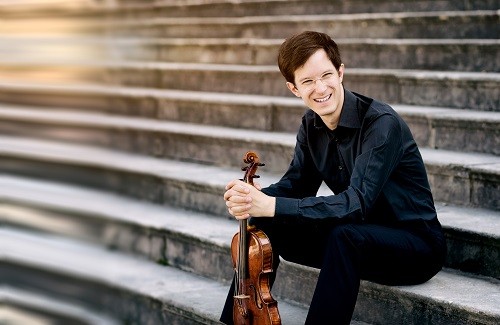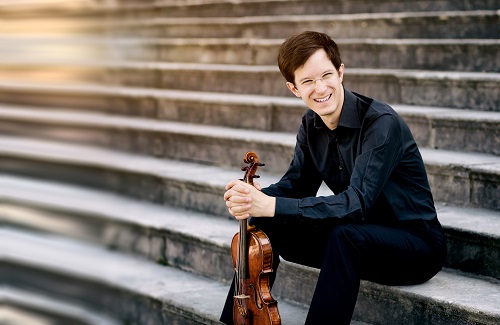 United States Brahms: Ignat Solzhenitsyn (piano), Korbinian Altenberger (violin), Rhoden Arts Center, PA Academy of the Fine Arts, Philadelphia, 7.4.2019. (BJ)
United States Brahms: Ignat Solzhenitsyn (piano), Korbinian Altenberger (violin), Rhoden Arts Center, PA Academy of the Fine Arts, Philadelphia, 7.4.2019. (BJ)

Brahms – Scherzo in C minor, from F-A-E Sonata, WoO.2; Violin Sonata No.1 in G major, Op.78; Violin Sonata No.2 in A major, Op.100; Violin Sonata No.3 in D minor, Op.108
If you have ever given credence to the canard, by now surely outmoded, to the effect that the music of Brahms is deficient in coloristic interest, a few minutes spent at this perfectly stunning Philadelphia Chamber Music Society recital would certainly have served to set you straight. Underpinned by the firm sobriety of his left hand part, the cascades of pearly tones that Ignat Solzhenitsyn conjured from the upper reaches of the piano intermeshed with Korbinian Altenberger’s cultivated violin line to bewitchingly kaleidoscopic effect. I have been a sufficiently devoted life-long lover of Brahms’s music to have written a book about it, yet this duo’s performances of all of his works for piano and violin (the traditional titling order that he was one of the last composers to go on using) came as a revelation. Brahms has been celebrated over the years for a number of characteristics, but the sort of sheer dazzling sonic imagination the players found in these four works has not commonly been among the qualities singled out for praise.
Familiar as I have been for years with Solzhenitsyn’s superb playing, I was making my first acquaintance with Korbinian Altenberger on this occasion, and I can confidently declare that he showed himself to be a fully worthy partner to his eminent colleague. His fingers and bow arm work beautifully, and equally impressive is his musical acumen. Especially striking and stylish is the undoctrinaire quality of his vibrato, which is not ladled over the music from outside but instead unfailingly emerges with appropriate moderation in response to the expressive implications of the score.
Each of the works on the program responded to these players with its individual personality vividly captured, so that the performances were free from any hint of too much uniformity. Yet the attributes that make Brahms always unmistakably Brahms were clearly to be heard and felt. In that regard, the change from the originally announced order, moving the Scherzo to the beginning of the program, paid a dividend as early as the eighth measure of that piece, for the uncompromising manner in which both players embraced and celebrated the composer’s penchant for rhythmic transformations of the pulse is revealed immediately by the shift, here and repeatedly in the further course of the music, from the basic 6/8 rhythm to an emphatic 3/4. Unlike many composers, Brahms did not feel the need to draw special attention to such effects by explicit changes of time-signature—he simply assumed that his interpreters would be able to read music.
Our violinist and pianist repaid that confidence throughout the afternoon, with the broader result that the raw power of the youthful Scherzo, the sonic delicacy of the G-major Sonata, the richer tonal palette of Opus 100, and the dramatic intensity of Brahms’s last contribution to the violin sonata genre were all honored with equally compelling insight. Amusingly introduced by Solzhenitsyn, the encore was the slow movement from the composer’s arrangement of his F-minor Clarinet Sonata, in which Altenberger’s velvety tone seemed to me, whether intentionally or not, to evoke the very nature of the clarinet.
Bernard Jacobson
